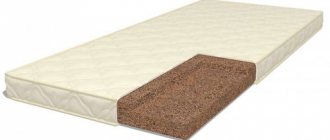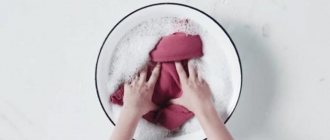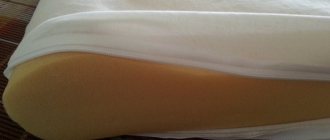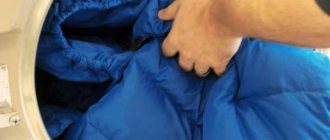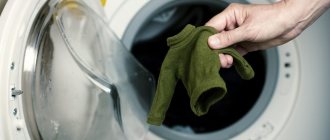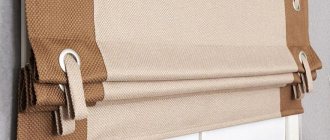How to wash a felt beret at home?
- Felt berets should be washed in cool or slightly warm water. Its temperature should not exceed 27 degrees.
- After washing, the product should not be twisted by hand. Just lay it out on a terry towel and leave it for a while to absorb excess moisture.
- Housewives often use a soup plate to dry felt berets. It allows you to dry your headdress without wrinkles.
- How to wash a felt beret with an arrow? If there is an “arrow” on the beret, then use a small weight for drying. To do this, fold the product into a “cake” and press it down with a heavy object. Do not use an iron for this purpose - it leaves unsightly shiny streaks on the surface.
What kind of fabric is it and what is it made from?
The name felt fabric comes from the French word feutre and is a type of felt, which is a non-woven material obtained by felting wool or fluff.
The modern assortment is represented by different types of felt, in which synthetic fibers are used, giving the material new properties.
- Wool felt. Material made from natural fibers (most often sheep or goat wool is used) is used for small products. It is capable of deformation and emits a specific unpleasant odor when damp. During use, pellets form on the surface.
- Wool blend. In this variety, approximately half of the composition is acrylic and viscose fibers. When touching the skin, there is no irritation characteristic of clean wool. The textile is smooth, soft, has a wide range of colors, but is unstable during prolonged contact with moisture. May fade and lose shape. Suitable for making decorative parts and small items.
- Acrylic. It has gained popularity due to its good elasticity, strength, low thickness, and a variety of rich colors. This felt is easy to clean, does not fade, and retains its shape. Allows you to make things of various shapes and degrees of complexity.
- Polyester. Due to the strength of the fibers, it is one of the most wear-resistant varieties. Popular for making bulky items - bags, cases, toys.
- Viscose. It is characterized by high strength. It is recommended for creating small design details and decorations, since it can lose its shape after washing.
What does felt fabric look like?
The main area of application for felt is handicrafts. They make toys and decorative elements to decorate a variety of products. Felt hats, bags and shoes are popular. Elastic, durable varieties are suitable for upholstery of upholstered furniture.
For creativity, we offer modeling felt, which when wet becomes plastic and allows you to model any shape. The created configurations are saved after drying.
Among the advantages of felt are environmental safety and ease of processing. It is important for needlework that the cuts do not fall off. This allows you to create appliqués, various brooches and other decorative details.
Attracts good wear resistance, wide color palette. This material retains heat well. The main disadvantage is loss of shape if not properly cared for.
How to wash a felt beret: a few more ways
- The felt item can not be washed, but simply cleaned with a solution of ammonia. Dampen a piece of coarse cloth in it and wipe the product. Dry the headdress with a clean, dry cloth. Additionally, “walk” with a toothbrush and leave it for a while to dry thoroughly.
- Clean heavily contaminated areas with pumice, after pre-treating it in table salt or bran.
- Grease stains can be easily removed with purified gasoline. Wipe the contaminated area with it, and then additionally “walk” with a brush dipped in a solution of warm water and ammonia.
How to wash a wool beret at home?
- If the headdress is very dirty, soak it for a couple of hours in water with the addition of ammonia. For 6 liters of clean water you will need 2.5 tbsp. spoons of alcohol.
- It is advisable to wash a wool hat by hand. Washing in a washing machine (even on a delicate cycle) can lead to deformation of the headdress.
- To wash woolen products, liquid soap, shampoo or special powder for wool are suitable.
- The water temperature should be 30 degrees.
- Dilute the cleaning agent in clean water, and then place the woolen product in it.
- Make a few kneading movements. Do not stretch or twist the beret under any circumstances.
- Place the item on a terry towel to absorb excess water.
LiveInternetLiveInternet
—Tags
—Help for newbies
-Video
-Music
—Search by diary
—Categories
- Lessons/LiRu/etc (775)
- Congratulations (72)
- Animation/Clipart/Frames (117)
- Computer (228)
- Utilities (221)
- ACCESSORIES: (413)
- A: Jewelry. (292)
- ARTISTS/other (123)
- Body Art/Hand Art/Land Art/Pebble Art (26)
- H/W.DIFFERENT TOYS: (587)
- Knitted toys (311)
- All dolls (117)
- Amulet/Home/Family (43)
- Sewn toys (88)
- H/S: Angels. (28)
- H/W: Butterflies/Hearts (77)
- H/W: MEN. (214)
- Men: Summer (39)
- Men: Hats/Scarves (48)
- H/W: Socks/Slippers//Other. (143)
- H/W: Various shoes (61)
- H/W: Plus size ladies (135)
- H/W: Bags/Cases/Wallets (294)
- B: Applique/Motive (138)
- B: Blouse/Tunica (313)
- B: Bolero/Shrag (216)
- B: Vase/Box (35)
- In: Video/Hook/Knitting needles (28)
- In: Volog/Irl/Romanian/Frif (230)
- In: Home/Kitchen (130)
- B: Jacket / Jacket / Pullover (1180)
- B: Vest. (269)
- B: Border: Needle/Hook (252)
- B: Carpet/Rug (101)
- B: Yoke circle. (58)
- B: Swimsuit/Pareo (77)
- B: Tank/Top/Shorts (617)
- In: Review/Yarn (64)
- B: Coat/Cardigan (211)
- B: Panels/Curtains (67)
- B: Drape/Poncho/Shawl/Scarf (461)
- B: Gloves/mittens/mittens (68)
- B: Bedspread/Plant/Pillows (255)
- B: Napkins/Tracks (374)
- B: Sundress/Dress/Suit (697)
- B: Tablecloth. (112)
- B: Skirts. (210)
- EMBROIDERY:Cross stitch/Ribbon/Dr (801)
- Q: Everything for embroidery. (121)
- Q: Children's theme. (40)
- In: Icon/Amulet/Rushnik (53)
- In: Kitchen/Other topics (163)
- B: Tapes (34)
- Q: Marine theme. (8)
- Q: New Year's theme. (39)
- Q: Easter theme. (23)
- B: Plastic canvas (32)
- B: Pillows (108)
- B: Richelieu (15)
- B: Sachet/Bag (24)
- B: Tablecloth (19)
- CROCHET (1037)
- In: Fork/Tenerife (10)
- B: Tape/Cord (39)
- B: Leaves (43)
- In: Patterns/Lessons (503)
- B: Flowers. (270)
- KNITTING (615)
- In: Lessons (396)
- B: Jacquard. (74)
- B: Leaves/Flowers (12)
- KNITTING/SEWING: Children (1243)
- V.Sh: Girls (483)
- V.Sh: For kids. (306)
- V.Sh: For boys. (149)
- V.Sh: Boys/Hats (116)
- H/W: Girls/Hats (350)
- HEADWEAR: (513)
- Women: Beret/Hat/Winter (236)
- Women: Beret/Hat/Summer (130)
- CHILDREN'S PAGE (239)
- D: Accessories (63)
- D: Fun/Games/Crafts (151)
- D: For kids. (21)
- HOME PAGE (287)
- D. Animals. (84)
- D: Crafts/Home (106)
- PAINTING. DR. (311)
- Graphics (20)
- Illustration (103)
- JOURNALS (1749)
- 1001 tips for summer residents (12)
- Online magazines (1)
- BURDA MODEN (65)
- Anna (26)
- Crochet (59)
- Diana (72)
- Drops (8)
- Knits (82)
- Let's knit series (46)
- Merino (6)
- Mezginiai (2)
- Stella (10)
- Susanna (31)
- Verena (67)
- Asia (63)
- We knit ourselves (51)
- Knitting is your hobby (77)
- Crochet. (163)
- Doublet (142)
- Ukrainian Magazine/Embroidery/Other. (132)
- Handicraft books (119)
- Lena (36)
- Mod (77)
- Natalia (31)
- Sabrina (140)
- Sandra (32)
- SEWING (10)
- HEALTH (350)
- Diet/Fitness (47)
- Recipes of traditional healers (127)
- Ambulance! (85)
- INTERESTING (242)
- I. Around the world (75)
- I: Animals. (37)
- I: Nature. (39)
- I: Birds. (80)
- MOVIE. DR. (513)
- Video. (143)
- Fairy tales. Cartoons. (56)
- Feature films (316)
- BOOKS. DR. (554)
- Soul/Poems (267)
- Postcard (43)
- Proverbs (23)
- Psychology (119)
- School (60)
- COOKING (1949)
- Dishes/Mushrooms (27)
- Steamed dishes (9)
- Dishes/Dessert (73)
- Meals/Breakfast/Porridge (30)
- Meals/Snacks (55)
- Dishes/Jellied (22)
- Dishes/Beautiful decoration (79)
- Dishes/Seafood/Fish (94)
- Dishes/Meat (223)
- Dishes/Drink (17)
- Dishes/Vegetables (155)
- Dishes/Liver (17)
- Dishes/Salad (132)
- Dishes/Soup (38)
- Dishes/Cheese (17)
- Dishes/Cottage cheese (37)
- Dishes/Fruits (27)
- Delicious Recipes/Magazines (65)
- Baking/Miscellaneous (761)
- Baking: Frosting/Jelly/Cream (50)
- Baking Tips (20)
- Harvesting/Winter (159)
- Lifehack/Kitchen (5)
- Multicooker/Bread Maker (14)
- Orthodox cuisine. (88)
- Holiday/Menu (29)
- Seasoning/Sauce/Marinade (21)
- Collections of recipes (11)
- Magic/Signs/Games (109)
- Makeup/Manicure/Hairstyle (121)
- Care/Hair (35)
- Care/Body (18)
- MUSEUMS. COUNTRIES. DR. (268)
- Virtual walks (44)
- Applied arts (57)
- Cathedrals (14)
- Countries (82)
- MUSIC PAGE (249)
- Orthodox songs (10)
- Compilations (72)
- NEW PRODUCTS: All sorts of handicrafts. (660)
- N/Wreath (44)
- H: Beads/Sequins (178)
- N: Paper/Crepe/Plastic/Colored (82)
- N: Felting. (18)
- N: Decoupage. (64)
- H: Basket/Casket (38)
- H: Postcard/Cardboard (32)
- N: Plastic canvas (25)
- N: Polymer. clay. Salty. dough (37)
- N: Felt (11)
- Weaving/Macrame/Tatting (269)
- Newspaper (28)
- Macrame (109)
- Tatting (5)
- UTILITIES: (419)
- P/Handicraft/Sewing (147)
- P: Life (168)
- P: Kitchen (44)
- P: Tips (16)
- SELECTION RULES (119)
- Video Etiquette (9)
- Shoes (9)
- Advice/Women (54)
- Advice/Men (23)
- Etiquette/Society (8)
- Etiquette/Desk (18)
- HOLIDAY PAGE: (544)
- New Year's (289)
- Easter (108)
- Wedding. (146)
- RELIGION (106)
- COLLECTION OF MISCELLANEOUS: (396)
- Car enthusiasts (42)
- Illusion (17)
- My. (23)
- Let's laugh (172)
- Drawing/Photography/Dr (107)
- Old age is not a hindrance (39)
- FLOWERS AND VEGETABLE GARDEN (292)
- Vegetable garden (122)
- Flowers (180)
- SEWING FOR CHILDREN (108)
- Girls (75)
- Boys (29)
- SEWING MISCELLANEOUS: (852)
- Women's (235)
- Quilting/Embroidery (2)
- Wallet/Case (69)
- Kitchen (33)
- Ribbons/Lace/Tulle (111)
- Alteration/Sewing Miscellaneous (260)
- Patchwork (22)
- Bags (75)
How to wash a woolen beret without shrinking
Do you have a knitted beret in your wardrobe and it got dirty? If it is knitted from woolen threads, then it must be washed according to the same rules as other wool products. It is better to use hand wash. Washing in a washing machine is also allowed. It is necessary to set the mode for woolen items. Wash patterned hats carefully, otherwise they may end up with an interesting abstract pattern.
As you can see, you can clean your favorite wardrobe item in different ways. The best option is hand washing. If there is severe contamination, it is recommended to treat them with soap, pumice, salt, ammonia, etc. First, try cleaning a small piece that is not very noticeable, and then move on to cleaning the entire headdress.
How to wash a wool beret
The fashion for berets seems to never go away. This headdress has been familiar to us since the Middle Ages. It has not only firmly taken its place in the uniforms of some types of troops, but is also widely used by women and men in modern everyday life in the cool season. Frequent use of the beret requires appropriate care and cleaning. Fortunately, it is quite possible to give it its original appearance on your own. The main thing is to follow simple tips, and then the stylish accessory will be with you for many years.
How to properly wash a wool beret at home
To achieve excellent results in caring for any woolen items, you should listen to the following tips:
- Give preference to hand washing to preserve the original appearance of the product.
- Wash in cold water for the same reason.
- Use special products for wool and fabrics that require careful handling.
- The beret should not be rubbed or twisted too much, then it will better retain its shape.
How to wash a felt beret
A felt beret is a type of woolen beret . It is made of dense non-woven material, which is made from the down of goats or rabbits. Felt is a subtype of felt, obtained by felting wool under the influence of hot water or steam.
Many people are afraid to wash this item of clothing because the fabric may become deformed. But by following our advice, you can reduce all risks to a minimum.
Detergents
On store shelves you can find, in addition to regular washing powders and gels, special detergents for washing items made of wool and fabrics that require careful handling. They differ from other products in the characteristics necessary for caring for very capricious materials.
When washing a beret, it is better to give preference to special gel products due to a number of the following properties:
- Such products care for wool fibers, restoring their former appearance, eliminating stretching and bobbins.
- They rinse well and do not remain on the fibers, thereby preventing the destruction of the natural material.
- They protect from deep penetration of dirt into woolen fabric, as if “covering” the fibers, thus, you will have to wash the woolen item less often, and it will wash better.
Methods for washing and cleaning stains
It is advisable to wash woolen products by hand and in cold water, but modern machines offer a “Wash wool” function. When using a washing machine, it is better to select the “no spin” washing mode.
If the stain is not too large, but still noticeable, you can resort to treating it without completely erasing the beret. To do this, use a special stain remover; in the absence of which, the simplest means at hand will do. Grease stains can be treated with salt or starch, coffee and juice stains with vinegar, ink and wine stains with alcohol. Then rub the stain with a napkin or fine sandpaper, moisten it with water, and remove excess moisture with a napkin.
Advice! Many housewives recommend treating stains with ammonia dissolved in water in a 1:1 ratio. Also, when treating oily contaminants, you can add a little denatured alcohol or purified gasoline.
How to dry a beret correctly
You need to dry this headdress in a straightened form, preferably stretching it over something wide (for example, a deep soup plate). Before drying, the headdress should be squeezed out of excess water quite a bit, then blotted with a terry towel. You should not dry your felt beret next to a radiator or in the sun; let it dry without sudden temperature changes.
How to wash a knitted beret
All of the above tips are quite relevant for washing a knitted beret.
Still, knitted items are not as delicate as felt ones, and here you can certainly use the help of a washing machine. But all under the same conditions: using a special mode and detergent for washing wool, as well as without spinning or with spinning, but at the lowest speed.
We dry a knitted headdress in the same way: on a towel, unfolded. Even better - on a plate or on a special mannequin.
Manual
Experienced housewives know that you can wash cashmere coats at home; labels sometimes also allow washing large cashmere items. The safest way is gentle hand washing.
Pink cashmere sweater
Let's look at step-by-step instructions for washing cashmere items at home:
- detergent cannot be poured onto the product, it must be diluted in water in advance and the foam must be well beaten;
- water temperature should be 30-35 degrees;
- Place the product in water and soak for a short time, 10-15 minutes is enough for the dirt to soften;
- Wash delicately, gently squeezing and unclenching with gentle movements. Do not rub, twist, or stretch;
- drain the soapy water, pour in clean warm water of the same temperature. Rinse several times until the detergent is removed;
- pour the water out of the basin, place the product on the bottom and leave for a while to let the water drain. If a large item is being washed, for example a coat, then it can be placed at the bottom of the bathtub or in another large container to drain the water. It is impossible to squeeze and twist, lift and hang, the thing will be deformed;
- Dry horizontally (see below).
Hand wash sweater
The best solution is to wash cashmere items by hand. Delicate care will ensure gentle cleansing and clean clothes well. How to hand wash a cashmere sweater or dress:
- Remove the pellets. Down products are susceptible to the smallest particles of fluff rolling off to form small balls, which can be easily removed with a special machine.
- Removes heavy dirt. Stains are first removed by holding the item over steam or using a soda solution.
- They wash the sweater. The washing gel is dissolved in warm water, the item is laid out and allowed to sit for a while. Then wash the product with soft blotting movements, then rinse in cool water.
- Dry. To speed up drying, the sweater is laid out horizontally or wrapped in a terry towel.
After such washing, a cashmere sweater or dress will retain its shape and attractive appearance.
How to wash a beret made of thick cashmere:
- Remove pellets and heavy dirt.
- Turn inside out and wash as described above.
- To dry, place a liner inside that follows the shape of the product.
Cashmere berets are made from denser material, and the main task when washing is to maintain the original shape, for which special blanks are used.
The first step is to pre-treat the stains. Launchress Old or Stubborn Soil Remover is an excellent product, also suitable for delicate fabrics and cashmere wool.
We suggest you read: How to wash toys in a washing machine, instructions and rules
How to wash cashmere items by hand:
Check the label on the clothing. Depending on the fiber blend, washing needs may vary. Use laundry detergent specifically designed for wool and silk. Fill the bathtub with warm water. Hot will cause the sweater to shrink, and cold will not remove dirt from the fibers as expected. Add some detergent or baby shampoo. Dissolve it well. Use less powder than indicated in the instructions, since excess is difficult to wash out and dirt remaining in the fiber will stick faster. It is not recommended to soak clothes. Wool swells due to moisture, so it is best not to leave the pullover in water for too long. Gently squeeze clothes under water to help them absorb more detergent
Don't twist things. If any areas need more attention, apply soap or shampoo directly to the affected area and massage gently. Cashmere is a thin knit, so refrain from rubbing
This will cause knots to appear on your clothes. In addition, the sweater may not regain its original shape after such a procedure. Never use bleach to remove stains; it can damage the wool fibers. Drain dirty water. Fill the bathtub with clean liquid. Rinse the product in warm water. Do not rinse under the tap as this will stretch the fabric. Continue changing the water until all the soap suds are washed out of your clothes. Squeeze out excess moisture. Do not twist the sweater, it will stretch. Gently press it against the tub. After removing excess moisture, lay the sweater on a towel and press down slightly. The towel will absorb the water. Place the clothing on a flat surface. Straighten the sweater and give it the desired shape.
Hand washing cashmere is not an easy task. But drying is also important.
Poorly dried cashmere is an ideal environment for moths and other insects. In addition, he things will emit an unpleasant odor.
How to properly wash and dry berets
Very often questions arise regarding washing handmade products, today I’ll tell you about berets. Let's start from the very beginning, before washing, thread the thread evenly into the last loops of the beret. Be careful, choose a thread of natural color so that it does not fade during washing! The thread can be threaded with a needle with a blunt end or a hook, whichever is more convenient for you.
I recommend washing by hand in non-hot water, the temperature should be between 30-40 degrees, using products for knitted items, woolen items, you can also use any shampoo. It is advisable not to use powdered detergents. Leave the product for a few minutes, then wash it carefully and lightly wrinkle the product.
We squeeze the product into a towel, squeezing it in our hands like a ball of thread or a snowball.
Next, the beret should be pulled onto a round surface (lid, smooth plate and whatever comes to your mind, the main thing is that it is round) with a diameter of 25.5-28 cm. We choose in proportion to the beret. After stretching the beret, we tighten the thread that we tucked at the very beginning into the edge of the elastic band of the beret. Let's dry it. As soon as the beret dries and fixes its shape (this is about 4-5 hours), you can remove it from the circle and dry it flat.
Hand washing will take a little more time, but you will be sure of the result!)
The hat got caught in the rain
If your hat is soaking wet, you have a problem. It is unlikely that you will find a special blank in your house, so a three-liter jar, turned upside down, will do. This way the hat is less deformed when drying. You can also pull a round hat onto a ball of a suitable size or use an inflatable balloon.
Although dry felt repels water, prolonged exposure to a damp environment or rain will not do it any good. Heavy rain will soak through the thickest felt in a few minutes.
- No matter what kind of rain (drizzle or drizzle) your hat gets caught in, take care of it as soon as you get home.
- Shake off by hand.
- Brush off any remaining moisture and leave to dry near a heat source. Use a three-liter jar to prevent the brim of your hat from drooping. At home, this is the most affordable way to keep in shape.
- After drying, the brim and crown can be smoothed with a brush in the direction of the pile.
Fur beret
To clean this stylish product, you will need starch or natural apple cider vinegar, as well as a brush. To clean the fur of a beret, carefully spread the starch onto the fibers, ruffle them a little, and then comb them several times with a brush. All dirt should be absorbed into the starch and easily combed out with it. To use vinegar to clean a fur beret, mix it with water in a 1:3 ratio. Gently wipe the fibers, then comb the product with a brush. You can wipe the lining with the same solution. Take a cotton pad and soak it in the vinegar solution and thoroughly wipe the inside of the headdress. It is not advisable to machine wash a product made from such material. After this, the fur will most likely begin to fall out and will not be fluffy as before.
For a dark fur beret, you can use bran or sawdust. Heat them in a water bath and carefully distribute them between the fibers. After this, comb out the sawdust from the fur. With this cleaning method, you cannot use sawdust from coniferous trees, as they can stick together the fibers and leave stains on them. This is due to the large amount of resin in the wood. If you need to wash the fur, use animal shampoo. Lather the product on the fur, then remove with a damp sponge. When using this method, the main thing is that the mezra (inner side of the skin) does not get wet.
Drying
Felt items that have been washed and thoroughly rinsed without twisting should be dried using terry napkins or towels with good moisture-absorbing characteristics.
Place a toy, beret, or other type of felt product on one half of the towel. Gently pressing, cover the second one. Repeat several times using a dry cloth or towel. A slightly damp item is placed on a horizontal plane on a white cloth until completely dry.
It is recommended to wear the beret on a plate designed for drying such items. This avoids shrinkage and provides a smooth surface.
Small felt parts are laid out on a towel, smoothed with your hands, giving the desired shape and air dried.
How to dry felt products
Velor or angora beret
Berets made from this material require delicate hand washing. To do this, prepare some water in a basin; the temperature should be 30-40 °C. Add liquid powder and gently wash the product without stretching it. If there is a stain on the surface, wash it with regular soap. After the powder, you can use conditioner, it will soften the material. The product cannot be squeezed. The velor beret is also machine washable. To do this, set the delicate mode. It is best to rinse berets made of velor or angora in a solution of water and glycerin in proportions of 10:1.
How to wash in an automatic machine? How to make washing gel from laundry soap and soda? How to wash a thing so that it shrinks and shrinks?
Felt beret
Before washing your felt beret, clean it with a soft brush to remove any accumulated dust. Then soak the product for one hour in water with ammonia. You need to add 4 tbsp. l. for 10 liters of water. After this, prepare cool water (no more than 25 ° C), stir and foam wool powder or shampoo in it. Place the beret there and wash it carefully in water, without rubbing or stretching the fabric. This fabric can be easily wrung out, but not twisted. A felt beret can also be cleaned with vinegar and ammonia (5 tbsp each), as well as salt (1.5 tbsp). Mix the components and gently wipe the contaminated areas with the resulting solution, then remove it with a damp sponge.
Rules for washing products
Before washing a felt item, you need to decide on the type of fibers used in the manufacture of the material. This will allow you to choose a suitable technique that does not allow the product to deform and fade.
Wool felt requires special care, as it softens easily and can shrink significantly. The wool blend type is more elastic, but can also lose shape. Durable synthetic felt varieties warp at high temperatures.
It should be taken into account that upon first contact with water, felt sheds slightly even at low temperatures. Therefore, it is important to wash each product that differs in tone separately by hand. With subsequent procedures, this type of textile no longer fades, and the color is preserved.
Before washing, the products are shaken and cleaned of dry dirt and dust. Use a soft brush. You can vacuum things.



